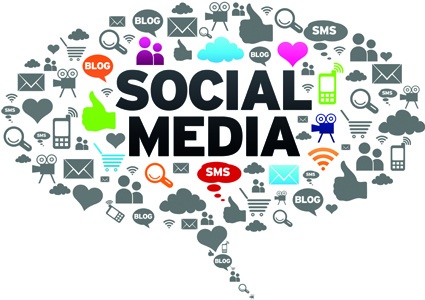Social Media in Pharmaceutical Companies


Getting in Touch - Big, diverse and powerful, social networks have transformed the way we communicate. With four out of five Internet users actively using social media, industries are discovering the huge potential these networks offer for communicating with their customers. For the pharmaceutical industry, social networks are an opportunity to bridge the gap between them and end users.
Approximately 74% of pharmaceutical companies have adopted social media - perhaps surprisingly, this is a far higher take-up than in financial services and retail. Many routinely post press releases and the like on Twitter and Facebook. Others go a step further, using social media to promote awareness of health issues, share corporate social responsibility initiatives and engage with end users (the patients) while providing them with efficient service in real time.
The opportunities
Social media offer unique opportunities, coherent with a larger reputation management strategy, to cast a wide net for data collection and analysis. Listening to what customers are saying on social media is a way to capture baseline sentiment about brands that are already on the market, collect data on patient needs and physician treatment habits. This intelligence can complement the data-driven approaches of business models, providing for a more agile, customer-centric approach. Social media presence empowers organizations to demonstrate leadership, and mitigate the reputation vulnerability of research transparency by articulating a commitment to product safety, transparency and pricing.
The regulatory challenge
So why are so many companies reluctant to spread their social media wings? The pharmaceutical industry is one of the most regulated industries. Strict regulatory and compliance demands - and fear of upsetting regulators with social media campaigns - prevent companies from fully embracing the platforms. Pharmaceutical companies in the US, for example, must adhere to the guidelines of the FDA's Division of Drug Marketing, Advertising, and Communications (DDMAC), which aims to ensure that prescription drug information is truthfully conveyed to the public. While the guidelines for print and broadcast media are explicit, they fail to properly accommodate fast-evolving social media channels and their power to educate and engage with patients.
Social media communication is also at odds with reporting obligations. Manufacturers, packers and distributors are required to submit all known reports of adverse drug side effects to regulatory bodies. Given the free-for-all approach of social media, there are real risks of inaccurate, unverified data being shared in a public domain by patients - and in such cases it is hard to verify authenticity.
While waiting for clear, revised guidance from regulatory bodies, companies have been attempting to adopt social media within existing rules. Taking a few proactive measures can mitigate the risks:
- Develop clear policies for engaging in social media.
- Be sure you understand current legal restrictions.
- Communicate with your legal team and keep an eye on the news for any regulatory changes
- Encourage regulatory bodies to research and resolve - with industry support - issues relating to social media
Social media: Pandora's box?
One widespread concern of using popular social media in a commercial or professional context is the inability to moderate possibly factually incorrect and inappropriate comments. All social media brand pages leave companies vulnerable to negative comments from disappointed customers, or from activists or groups with vested interests. Pharmaceuticals, in particular, have major reservations about social media if they know they cannot balance the "bad" or misleading information in the public domain. For example, in August 2011, many pharmaceutical companies were forced to shut down their Facebook pages, especially those devoted to particular drugs, after Facebook stopped offering the companies an option to moderate public comments.
Another caveat is the completeness of the data captured in specific therapeutic areas. Social media user engagement can vary depending on type and stage of illness. For example, evidence suggests that breast cancer patients are 12 times more engaged than diabetes patients , as diabetes may be considered more manageable and less life threatening than cancer or HIV / AIDS. The risk of inconclusive analysis is something pharmaceuticals should bear in mind when collecting data through social media channels.
Making it work
Despite all the constraints, some pharmaceuticals are already using social media innovatively and to great effect. Pfizer has the best reputation for its customer engagement on Facebook and Twitter. It has the most followers on Twitter and is the third most ‘liked' pharma company on Facebook. Johnson & Johnson has created an active social presence with a blog that blends stories of employees with wellness information, and corporate content, complemented by YouTube and Facebook pages on corporate social responsibility initiatives and its involvement in social causes. And the Twitter feed of German drug maker Boehringer Ingelheim is filled with articles and tweets about more than prescription drugs, featuring celebrity tweeters such as Lance Armstrong and Stephen Fry, blogs and promotions of YouTube video interviews. It has more than 10,000 followers.
Most companies understand that social media are important, but the challenge lies in making the platforms work for the business - and in transferring current experience into measurable data and results. Using Twitter feeds and Facebook pages to engage with and educate customers, raise brand awareness and manage brand perception is just the start. Few companies have a complete grasp of exactly how to use social media to interact with consumers, improve products, services and brand recognition and, ultimately, drive sales and profitability. The next step is therefore to actively work and invest in the following areas:
Attracting and retaining talent; prospective employees may be more inclined to apply for jobs at companies that use social media in creative and innovative ways.
- Crowdsourcing; for example Boehringer Ingelheim has partnered with Kaggle, the platform that uses gamification to solve complex scientific problems
- Cross-industry collaboration, through tools like Cognizant 2.0, which allows employees to interact in real-time, boosting efficiency and productivity.
- Creating online communities where customers can interact with each other to discuss their experiences of pharmaceutical brands - and interact with the brand itself in real time without the burden of email or customer service calls. In turn, organisations can better understand customer preferences and who influences those preferences online.
Pharmaceutical companies already have the experience required to manage data collection, apply analytics and generate businesses insights. New, flexible processes such as adaptive design provide frameworks that can be applied to other business areas and enable more cost-efficient and decision-oriented ways of operating.
Like other new technologies, social media tools need to be managed into the workplace to release the innovation potential and new ways of working within regulatory constraints. The new ‘millennial' workforce is a generation of employees that are accustomed to using social media applications on an everyday basis. By giving these digital-era people the right tools to replicate their digital lives in the workplace, an organisation stands to truly improve its overall performance.






